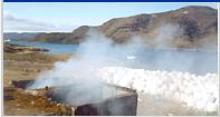A new research titled, “Impacts of climate change on snow, water, ice and permafrost in the Arctic,” reports that Arctic is undergoing drastic climatic changes than predicted before. The report has been prepared with contributions from around 200 polar researchers.
The research coordinated by the Arctic Monitoring and Assessment Program will be used as a basis for the fifth report of the Intergovernmental Panel on Climate Change (IPCC), which is anticipated to be complete by 2014.

The research found that the Arctic has become one among the quickest warming places in the world. It also observed that since the commencement of research about five year ago the air temperature has become the warmest when compared to 1880 the year, from which the actual air temperature monitoring begun. By utilizing tree rings and other parameters the researchers found that the summer temperatures during the last decade in the region have reached the highest level in the last 2000 years thus resulting in up to 20% decrease in snow levels during May and June months. They also have observed that the duration of winter season in the region has become shorter by two weeks in the last few decades.
The research shows concern on the increased levels in melting of permafrost that stores almost double the quantity of carbon currently prevailing over the atmosphere. The carbon formed from organic materials was buried deep and frozen during the last ice age. But the melting of permafrost may result in the discharge of methane, a greenhouse gas, which is 20 times more potent than carbon dioxide, and could eventually raise the intensity of global warming. The research also does not rule out the possibility of the vegetation that came over the melted permafrost ground absorbing the released carbon dioxide.
The research also details about the reduction in the levels of Arctic albedo (reflective power) due to decreased amount of surfaces that are covered with snow or ice to reflect the solar radiation. It points out that reduced levels of solar reflection will increase the levels of heat absorption by the earth thus increasing the temperature level at the Arctic resulting in climate changes.